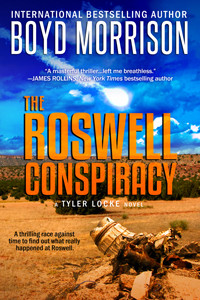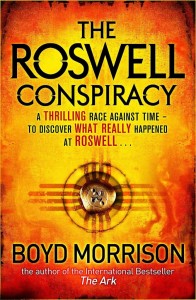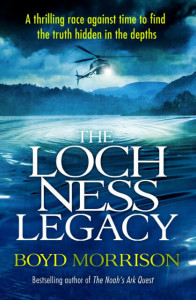I honestly don’t know how important covers are in the ebook age. A print book facing out in a store is designed to catch your eye so that you’ll pick it up and peruse the back cover summary, maybe check out a few pages of the writing. You’ll be able to see tiny details on the cover, as well as possible blurb. Here’s what my cover for THE ARK looks like at full size:

Now here it is at the size you’ll see when browsing the genre lists on Amazon:
Other than my name and the title, which you’ll see anyway next to the cover, you have a hard time making anything out besides the general color scheme. It gets a bit bigger once you click on it to go to the book’s Amazon page, but even at that size you can’t read the blurb. It’s mainly eye candy, to make the brain go, “Oooh, pretty!”
Of course, I’m not advocating putting out a book with a nondescript white cover. The cover will be used for promotional purposes, you’ll want to have it on your website, and it has to hold its own against the other ebooks that have covers. It also has to look professional. An amateurish cover or a poorly worded description are the quickest ways to convey the message that the contents inside haven’t been created with any care, either.
What I don’t know is how often the cover influences buying behavior. It would be fascinating for Amazon to show a simple list of titles and authors with a one-line description and see if that made any difference in which books readers gravitated toward. In fact, it would be interesting for Amazon to let an author craft a Tweet-sized logline to list under the cover, title, and author name.
At the very least, you want a cover that catches the attention of a reader who would like your type of book and accurately represents the story that a reader will find inside. If you are traditionally published, the publisher will design it for you, and you might get consultation on it. They may even listen to you if you object strongly enough to the concept.
If you’re a self-published author, don’t do it yourself unless you are a graphic designer. Slapping something together with Powerpoint will scream amateur. I highly recommend you find someone to do it for you, and there are several options.
The first option is to hire a freelance designer. For my two self-published books, I hired Kim Killion at Hot Damn Designs to create covers that have a similar branding theme since they’re both in the Tyler Locke series. She’s easy to work with, quick, and charges very reasonable prices. Using stock photography, she has produced covers for Allison Brennan, T. Jefferson Parker, and Larry Bond, as well as scores of romance authors. Here are the two covers she designed for me on the left next to their UK counterparts on the right:
I think Kim’s covers are just as good as the British covers, and I highly recommend working with her. There are plenty of other cover designers out there, but make sure you check out their portfolios and get references before working with them.
Another option is a site called Designcrowd. The concept is interesting, although I haven’t tried it myself. You submit a project (such as a book cover) along with a price you are willing to pay and a deadline for submissions. Graphic designers from around the world then submit ideas to you on spec, and you can choose the best one (or none at all if you don’t like any of the choices). I’ve looked at some of the portfolios, and there are some very creative designs in the submissions. If you’re looking for a more unusual design or an illustration that doesn’t have photos in it, Designcrowd might be a good way to go.
I’m sure self-publishers would love to know what other choices are out there. Are there any additional recommended options for cover creators?





